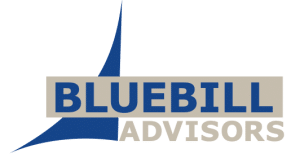Powtoon announced the launch of their centralised Visual Communication Platform offering for companies to create, manage, distribute, and track unlimited pieces of visual content. The new Visual Communication Platform by Powtoon is designed to make business employees collaborate more effectively, gain alignment across departments, and increase productivity. Powtoon is best known for its tools to create quick, easy and cost-effective video animations for internal communications, training and development, and marketing and sales. Based on this experience, Powtoon is addressing the pain points felt by companies in the whole lifecycle of video creation and distribution under one platform. Existing clients will continue to be supported through Powtoon’s current offering with new tools augmenting the current platform. New features including screen capture, detailed character (avatar) customisation, advanced management capabilities and detailed analytics will be rolled out.
Category: Content creation and design (Page 44 of 71)
Technologies and strategies for authoring and editing, including word processors, structured editors, web and page layout and formatting, content conversion and migration, multichannel content, structured and unstructured data integration, and metadata creation.
Sensory unveiled VoiceHub, an online portal that enables developers to quickly create wake word models and voice control command sets for prototyping and proof-of-concept purposes. VoiceHub allows users to select languages and model sizes through drop down menus. Sensory’s VoiceHub provides developers with free tools to immediately create custom wake words and voice command sets for their applications. These projects take just moments to put together and some models are trained and downloadable within an hour of submitting them. VoiceHub outputs wake word and voice command set models, compatible with a companion Android application for quick prototyping, or as code for specific target DSPs for more advanced proof-of-concept testing. The tools allow developers to create wake word models, either custom branded or based on today’s most popular voice assistant platforms, and command set models targeting a desired memory footprint. This makes it suitable for all applications, ranging from ultra-low power, resource limited wearables to high-power, high-performance appliances on the edge.
Based on Sensory’s TrulyHandsfree technology, VoiceHub supports numerous languages for testing voice control across global product lines. Since VoiceHub trains voice models similarly to TrulyHandsfree, the wake word and voice control models created in VoiceHub are accurate and in most cases suitable for mass production. VoiceHub users can expect a steady stream of updates and new features, including support for more languages, expanded DSP platform support, and the ability to quickly develop large vocabulary natural language models. At launch, the platform supports DSP platforms from: Ambiq, Analog Devices, Cirrus, Cypress, DSPG, Foretmedia, Knowles, Motorola, NXP, Qualcomm, Renesas, ST Micro and TI.
Episerver announced that it has completed its acquisition of Optimizely. The combined company enables customers to do more testing, in more places, with greater ease. With the combination of creation and optimization, companies can now experiment on every customer touchpoint, from product development and content to digital experience and customer support, along with their go-to-market strategy and related business logic. Episerver’s expanded portfolio helps digital teams be more intentional in their customer engagements as well as more agile in adapting to changing behaviors and markets. As part of Episerver, the Optimizely progressive delivery and experimentation platform continues to support customers as a standalone solution, and will also be available as part of Episerver offerings starting immediately.
https://www.episerver.com/campaign/optimizely
Related articles:
Wrike announced new integrations with Adobe of their collaborative work management platform at Adobe MAX to allow creative and marketing teams to speed up creative production without leaving their preferred tools. The first integration is a Wrike plugin for Adobe XD, which allows designers to connect to Wrike functionality without leaving XD. The second integration connects the power of Wrike with Adobe Experience Manager, so teams can push and pull digital assets between the two platforms. Adobe has been investing in in-app extensibility with its Unified Extensibility Platform (UXP) to give creative teams faster and easier access to third-party plugins that extend Adobe Creative Cloud apps, like Adobe XD. Adobe Experience Manager Assets is a digital asset management (DAM) application that allows for the storage, management, and distribution of digital assets, along with the ability to build, maintain, and publish websites. This integration with Adobe Experience Manager enhances asset workflows in the following ways:
- Pull assets from Adobe Experience Manager into a Wrike task
- Push assets from Wrike to Adobe Experience Manager with metadata
- Proof Adobe Experience Manager assets in Wrike, including reviewing/commenting on assets and requesting approvals in Wrike
- Quick search for Adobe Experience Manager assets by using Wrike custom fields
- View metadata for Adobe Experience Manager assets attached to Wrike
- Use Adobe Experience Manager assets in Wrike’s Extension for Adobe Creative Cloud
Digital asset management software company, Third Light, has released a significant update to its digital asset management (DAM) software, Chorus, to deliver a complete collaborative DAM solution for creative teams. The update includes features designed to connect teams working remotely and facilitate collaborative project cooperation. With this update, Chorus now provides a suite of features that, used together, connect team members and drive creative projects-in-progress. File management tasks related to the DAM are connected to users’ desktop computers, freeing time and allowing teams to create and deliver their core roles. In this Chorus update, Third Light incorporates three key new features:
- The Project Sync app, which synchronizes files between the media library and users’ desktops, allowing them to be used seamlessly with Adobe design and production software, without using plugins
- File-by-file comments and reactions that allow teams to collaborate within the system, give feedback, post quick reactions via emoji and tag in other users, right next to the work itself.
- Detailed activity reports that provide business intelligence to project owners and IT teams.
Liferay announced the release of Liferay DXP 7.3. Liferay digital experience platform supports the need for organizations to digitize their operations and quickly create engaging digital experiences for customers, dealers, partners, and employees. Release highlights include:
- Content Performance Analytics: Liferay DXP 7.3 allows content creators to view metrics on how many visitors read through the entirety of their content directly in-line with the relevant page or asset. Content authors also have access to more traditional metrics such as total views, search engine traffic volume, and keyword reports. In addition, Liferay DXP 7.3 provides a new Content Dashboard allowing content creators and administrators to view a graphical representation of the assets they have based on specified characteristics such as category, tag, asset subtype, etc.
- Streamlined Content Creation: Liferay DXP 7.3 introduces the Master Pages tool to deliver visual consistency and help ensure branding guidelines are respected across all pages in a site. Subject to administrator permission, business users are now able to create Master Pages to specify common elements, such as headers, footers, and company logos across pages. Master Pages can be created using drag-and-drop widgets and components with changes automatically applied across all specified pages.
- Application Builder: Liferay DXP 7.3 delivers a new low-code capability to build business applications backed by Liferay’s Data Engine. Applications can be deployed in standalone fashion or added to pages as a widget or through the product menu.
- API Explorer: With the release of Liferay DXP 7.3, developers have access to the new API Explorer application, allowing them to easily monitor available APIs and API documentation. API Explorer also allows developers to run queries to test their applications during development and explore all available REST applications and endpoints. In addition, API Explorer comes with a GraphQL client.
- Application Security and Multi-Factor Authentication: Site administrators can activate multi-factor authentication, requiring users to complete additional checks to verify their identity beyond login name and password. Developers can also create additional custom authentication factors using a provided API. Once built, custom authentication factors appear in the authentication configuration list for deployment by site administrators.
Liferay DXP 7.3 is immediately available.
https://www.liferay.com/products/dxp
Related articles:
SMASHDOCs, a development and sales platform for collaborative word processing projects, announced a new solution that simplifies and accelerates collaboration in creating, negotiating, and signing contracts. SMASHDOCs’ Contract Drafting Projects allows all contract project stakeholders to work collaboratively from the first draft to eSigning. The new solution is suitable for medium-sized companies or large corporations, including insurance, banking, finance companies, as well as other industries.
The draft contract is stored online and every action is logged and audit-proof. It is also possible to add legally compliant, digital signatures without having to leave the online contract. At the end of the drafting process, the digitally signed contract and a clearly documented history of the entire drafting process are archived in PDF. Negotiations with other stakeholders can be conducted online via the platform or via exporting a Word version of the draft contract and re-importing the modified Word document with comments from the relevant parties.
The new solution ensures that every single step in the drafting process is transparent and traceable. SMASHDOCs simplifies workflows with section-by-section versioning, which makes sure that the entire contract drafting team knows precisely when and where an amendment has been suggested and whether it has been adopted or not. A second feature, intelligent change tracking, helps ensure no project stakeholder will miss or overlook modifications because it automatically highlights all of the changes that are new to the respective viewer (Adaptive Redlining). SMASHDOCs’ comment function facilitates detailed discussions about contract content in real time, including confidential exchanges between selected users. Metadata, such as the start date of the contract, interest rates, prices and bank transfer information can be tagged in the online contract, allowing contracts to be generated in a contract management system once negotiations have been completed without manual input. The system can also generate self-executing “Smart Contracts.”
Related articles:
TransPerfect announced the release of version 2.0 of its StudioNEXT cloud-streaming dubbing and voiceover platform as the company continues to launch products for the audio recording industry. StudioNEXT is part of the company’s MediaNEXT suite of AI-powered tools that automate and simplify workflows for creating and adapting media for audiences in any language using both virtual recording and traditional studio setups. With StudioNEXT 2.0, organizations can:
- Enable voice actors and directors to benefit from cloud-streaming technology to facilitate professional-quality dubbing and voiceover from distributed locations.
- Increase productivity with a redesigned user interface that improves the navigation experience for actors and directors.
- Improve quality with a newly designed rythmo band that gives talent better readability and accessibility by providing customization of viewing preferences for each user.
- Interactively record in a remote environment as voice actors can now review recordings and listen to other character recordings.
- Collaborate from anywhere with integrated video talkback features that give actors, directors, and clients the ability to communicate and offer feedback in real time. Authorized users can securely enter and exit recording sessions from anywhere in the world.
- Utilize multitrack recording with dedicated tracks per character that are now available through the recording session life cycle.
- Synchronize easily with editing and mixing platforms with Advanced Authoring Format (AAF) export to digital audio workstations, including Pro Tools, Logic Pro, and REAPER, while keeping the metadata and supporting time-code information.
- Edit more efficiently with an expanded post-recording suite that now allows trimming, moving, splitting, and snapping audio chunks with minimal clicks.
All upgrades to StudioNEXT are part of TransPerfect’s strategy to promote hybrid models for recording that combine cloud recording from home studios with the company’s global network of owned-and-operated studios for recording, editing, and mixing. The combination of these services gives clients the options and flexibility to meet timing and budgetary requirements.

